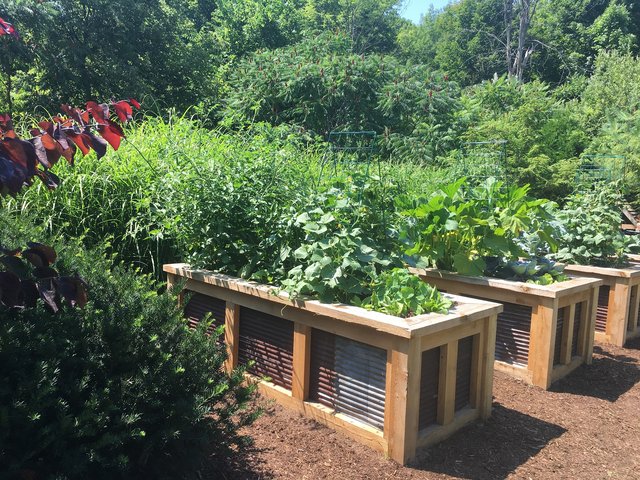Raised bed provides easy access and increased productivity
Elevate your garden to new heights for easier access and greater productivity. Raised beds allow you to overcome poor soils by creating the ideal growing mix. They also make gardening more comfortable with less bending and kneeling.
Whether you buy a kit or build your own, there are a few things to consider when creating a raised bed.
If possible, place the garden in a sunny location. Most plants need at least six hours of sunlight, and vegetables like tomatoes, peppers, and melons perform best with a full day of sunlight.
Choose a durable material such as interlocking blocks, fieldstone, plastic lumber, or naturally durable wood like cedar. The material chosen will influence the shape and size of your garden. Some materials allow for curved beds while others are limited to squares, rectangles, and other angular shapes.
Design your raised bed according to your space and your needs. A width of three or four feet makes it easy to reach all parts of the garden for planting, weeding and harvesting. Raising your planting bed at least eight to 12 inches improves drainage and provides ample space for most plants to root and grow. If you want to minimize flex, go higher. Add benches to increase your comfort and ease of gardening.
Roughen or loosen the surface of the existing soil if your bed is built on compact, slow-draining soil. This will allow water to easily move from the raised bed into the ground below. Cover the bottom of the bed with newspaper or cardboard, if necessary, to smother existing weeds and grass.
Line the bottom of your raised bed with hardware cloth to reduce the risk of animals burrowing into your garden. Lay the hardware fabric on the floor and fold it along the inside of the raised bed walls.
Fill the bed with a quality potting soil that is well-drained but also able to retain moisture and nutrients. This can be a mix of topsoil and quality compost, a high-quality potting soil, or a planting mix designed specifically for raised beds.
Grow all the plants you would normally grow in the ground. Just make sure the plants are suited to the growing conditions – sun, heat and wind – in your area. Since soil mixing and drainage is ideal in a raised bed, you will be able to grow more plants per square foot. Just be sure to leave enough space for the plants to reach their adult size.
Keep your plants healthy and productive with proper watering. This is essential for growing any garden, but even more crucial in a fast-draining raised bed. Simply raising the height of the garden increases drainage, and a raised bed filled with planting mix means more frequent watering. Consider using drip irrigation or soaker hoses to make watering easier. Always water thoroughly when the top centimeter of soil is dry.
Add mulch to help reduce watering and the need for other garden maintenance. Spread a layer of evergreen needles, pine straw, shredded leaves or other organic material on the surface of the soil. This helps retain moisture, suppresses weeds, and adds nutrients and organic matter to the soil as it breaks down. You’ll spend less time watering and weeding throughout the season.
Add an organic fertilizer to the planting if your planting mix does not already contain it. Reapply mid-season if plants need a nutrient boost. Always follow the instructions on the fertilizer container label.
The time and effort invested in creating raised beds will pay back many times over with years of healthy, productive gardens.
Melinda Myers is the author of numerous books, including Small Space Gardening. Myers’ website is www.MelindaMyers.com.


Comments are closed.